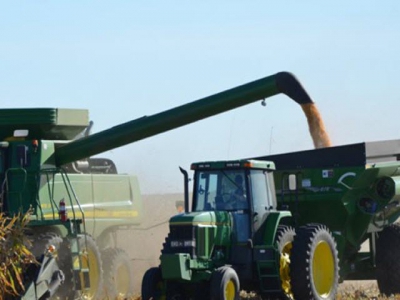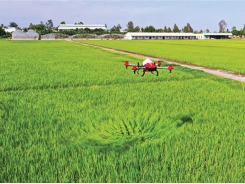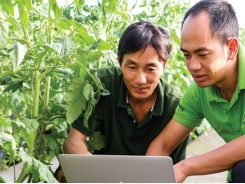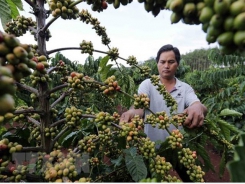Farmer sentiment on trade, ag economy improves

Survey suggests there could be large increase in U.S. corn and soybean planted acreage in 2020.
The Purdue University/CME Group Ag Economy Barometer improved 15 points to a reading of 136 in October, the result of 15-point increases in both of the barometer's sub-indices. The Index of Current Conditions rose to a reading of 155, and the Index of Future Expectations rose to a reading of 146. The barometer is based on a mid-month survey of 400 U.S. crop and livestock producers.
"Almost across the board, farmers were more optimistic about the agricultural economy in October," said James Mintert, the barometer's principal investigator and director of Purdue University's Center for Commercial Agriculture. "While the level of optimism among farmers is higher than earlier this year, the survey uncovered additional uncertainty related to trade agreements that are still being negotiated."
In addition to the standard survey, questions were added to the latest monthly barometer survey to gauge whether farmers feel that these pending trade agreements are important to the U.S. agricultural economy.
The U.S.-Mexico-Canada Trade Agreement is still waiting on approval by the U.S. Congress. When asked whether they felt that the agreement is important to the U.S. agricultural economy, 96% of producers indicated that it is either important or very important. However, only 55% expect it to be approved by Congress soon. At the same time, 97% of producers feel that a recently announced trade deal with Japan is also important or very important to U.S. agriculture.
Since last spring, Purdue researchers have been tracing producers' perceptions regarding the soybean trade dispute between the U.S. and China — specifically, whether they think the dispute will be resolved soon and the outcome will ultimately benefit U.S. agriculture. In October, 51% of respondents said an imminent resolution is unlikely, which is down from a reading of 59% in September and 71% in August. At the same time, 75% of farmers in the October survey said they expect that the final outcome will ultimately prove beneficial to U.S. agriculture. October marked the fourth month in a row that more than 70% of producers said they expect a beneficial outcome to the trade dispute.
Farmers were more optimistic about farmland values increasing and less inclined to think cash rental rates will decline than they were in September. When asked to look ahead in the farmland market both 12 months and five years into the future, more producers said they expect farmland values to increase. Meanwhile, just 14% of producers expect cash rental rates to decline in the upcoming year, compared to 22% who thought a decline likely when surveyed in September. The Farm Capital Investment Index also saw an uptick, rising 12 points in October after a two-month decline, as farmers were more favorably disposed toward making large investments in their farming operations.
Producers also had a more favorable view regarding making large investments in their farming operations in the October versus September survey. The Farm Capital Investment Index rose to a reading of 59, which was 12 points higher than a month earlier. The report said the investment index has been relatively volatile in recent months, dipping to a low of 37 in May before rebounding sharply in early summer. The October reading took the investment index back to within eight points of its July 2019 peak of 67.
Large increase in 2020 acreage possible
Given the large amount of prevented plantings of both corn and soybeans in 2019, the survey suggested that there could be a big increase in U.S. planted acreage in 2020. To learn more about farmers' spring planting plans, farmers who grew corn or soybeans this year were asked if they intended to increase, decrease or keep their acreage of those two crops the same in 2020. Approximately three-fourths of both corn and soybean producers said they did not plan to increase or decrease their acreage of those two crops in 2020. However, 14% of corn growers and 12% of soybean growers said they intended to increase their acreage of those two crops, respectively.
The survey also followed up with farmers who plan to increase their crop acreage and asked them by how much they expect to increase their acreage in 2020 compared to 2019. Two-thirds of corn growers who plan to plant more corn in 2020 said they intend to increase corn acreage by 10% or more, while one-third said they plan to increase corn acreage by more than 20%. Eighty percent of soybean growers who plan to plant more soybeans in 2020 said they expect to increase soybean acreage by 10% or more, and 40% said they actually intended to increase acreage by more than 20%.
Có thể bạn quan tâm
Phần mềm

Phối trộn thức ăn chăn nuôi

Pha dung dịch thủy canh

Định mức cho tôm ăn

Phối trộn phân bón NPK

Xác định tỷ lệ tôm sống

Chuyển đổi đơn vị phân bón

Xác định công suất sục khí

Chuyển đổi đơn vị tôm

Tính diện tích nhà kính

Tính thể tích ao hồ




 Third Vietnam Coffee Day to begin this weekend
Third Vietnam Coffee Day to begin this weekend  Experts talk ways to add value to Vietnamese…
Experts talk ways to add value to Vietnamese…